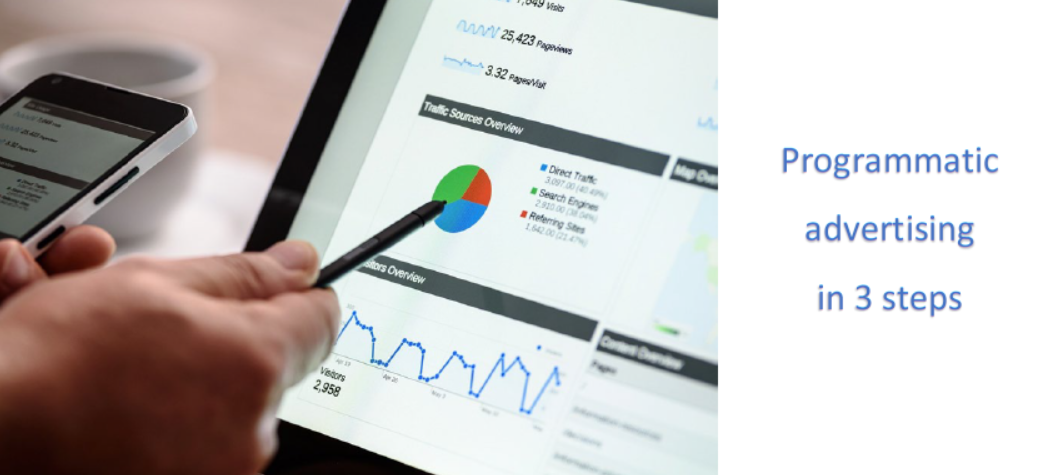Have you ever heard of programmatic advertising, and do you have a vague idea of what it is, but you’re not sure? This article is intended to explain what programmatic advertising is, how it works and, above all, what its added value is.

1. What is programmatics ?
Programmatic advertising consists of automating the process of buying and selling advertising placements. In short, this technique aims to make you more efficient in the management of your paid media campaigns:
- If you are an advertiser, this practice allows you to access in real time a set of advertising spaces offered for sale, from a single platform called DSP (Demand Side Platform). The platform therefore allows you to display your ads according to the criteria of your choice, and just about anywhere you want.
- If you are a publisher, you are on the supply side and therefore the programmatic gives you the possibility to make your inventory available for sale via a single platform called SSP (Selling Side Platform). The sale of your advertising space is therefore automatic and instantaneous, and you can apply the sales criteria of your choice.
- In both cases, you optimise the performance of your campaigns, you also centralise the analysis of your results and your invoicing system. You no longer need to contact each site where you wish to appear to negotiate your location, if you are an advertiser.
2. Are programmatic advertising and RTB (Real Time Bidding) the same?
No. Despite certain preconceived ideas, RTB is not an equivalent to programmatic advertising. However, we can say that RTB is an integral part of programmatic advertising.
To simplify, RTB is a real-time auction as its acronym indicates “Real-Time Bidding” and programmatic advertising does indeed offer this option but also other modes of buying such as PMP (Private Market Places). It is a private auction, limiting its bids to a restricted group of agencies or advertisers.
RTB remains a widely used purchase mode in programming…
3. How does it work?
In order to demystify programmatic advertising, we offer our clients an explanation through this diagram that we are making available to you today:

Programmatic advertising is divided into several stages, as shown in this diagram. First of all, advertisers define the parameters of their campaign, i.e. budget, audience, location, and content via programmatic buying platforms, called DSPs.
Publishers can also set their criteria such as price, availability and accepted formats via SSPs.
Finally, DSPs and SSPs communicate in order to conduct multiple auctions in real time and achieve their campaign objectives. The incoming data from each interaction is used and analysed by the programmatic platform and thanks to these analyses, it then optimises the advertisements by selecting only the most effective ones.
You can also listen to this explanatory video by Grégoire Peiron, director of Google marketing platform and Google Analytics on “Think With Google”.
To remember…
- In 2016, 53% of the display was purchased through programmatic, a figure that should reach nearly 75% by the end of 2019 (source: IAB).
- There is no minimum budget to claim to activate a programmatic campaign. By definition, the buyer defines himself which budget he wants to allocate to this strategy and is free at any time to increase or cut his investments.
- The granularity of the targeting will impact the success of your campaign.
- 9 out of 10 companies consider programmatic buying to be the future of advertising.
- More than a third of players have not yet adopted programmatic buying due to a lack of knowledge.
The bottom line is that programmatic buying is set to grow in the coming years, so don’t let this technology and complex jargon impress you. Programmatic advertising allows you to be as close as possible to the consumer and to address them in a personalised way at the right time.
Would you like to know more about programmatic advertising and its possibilities for your company? Make an appointment now with one of our experts for an offer!


